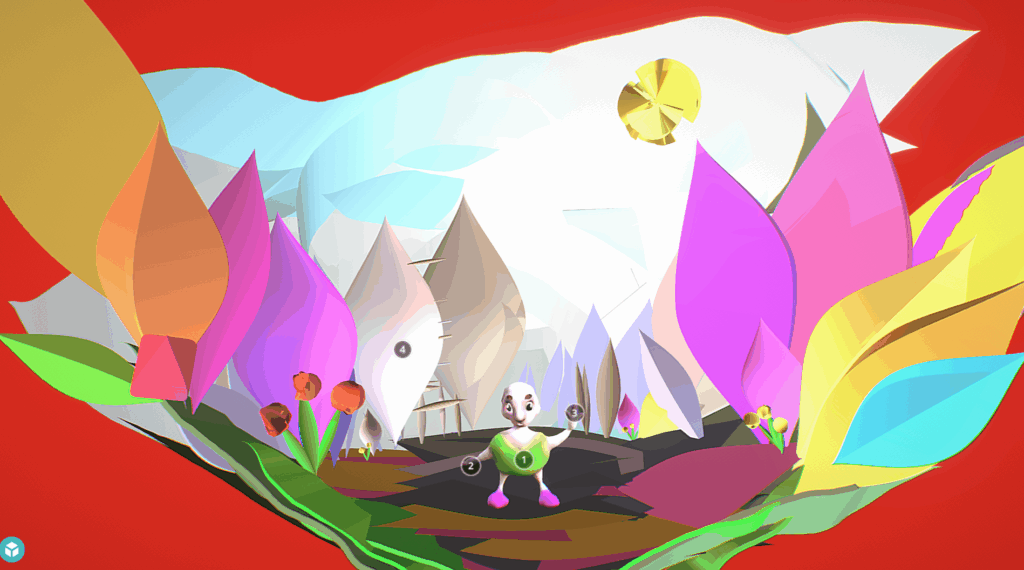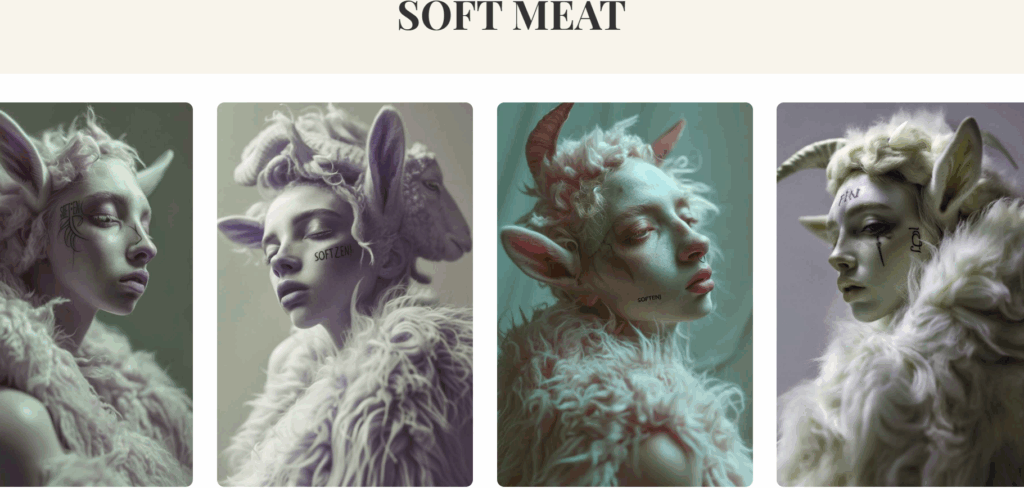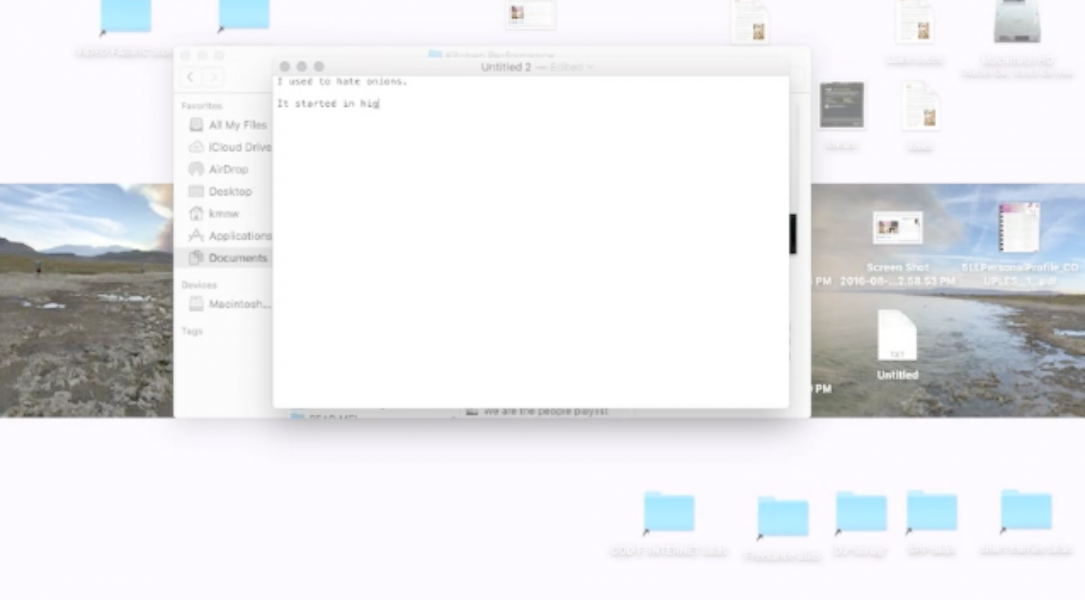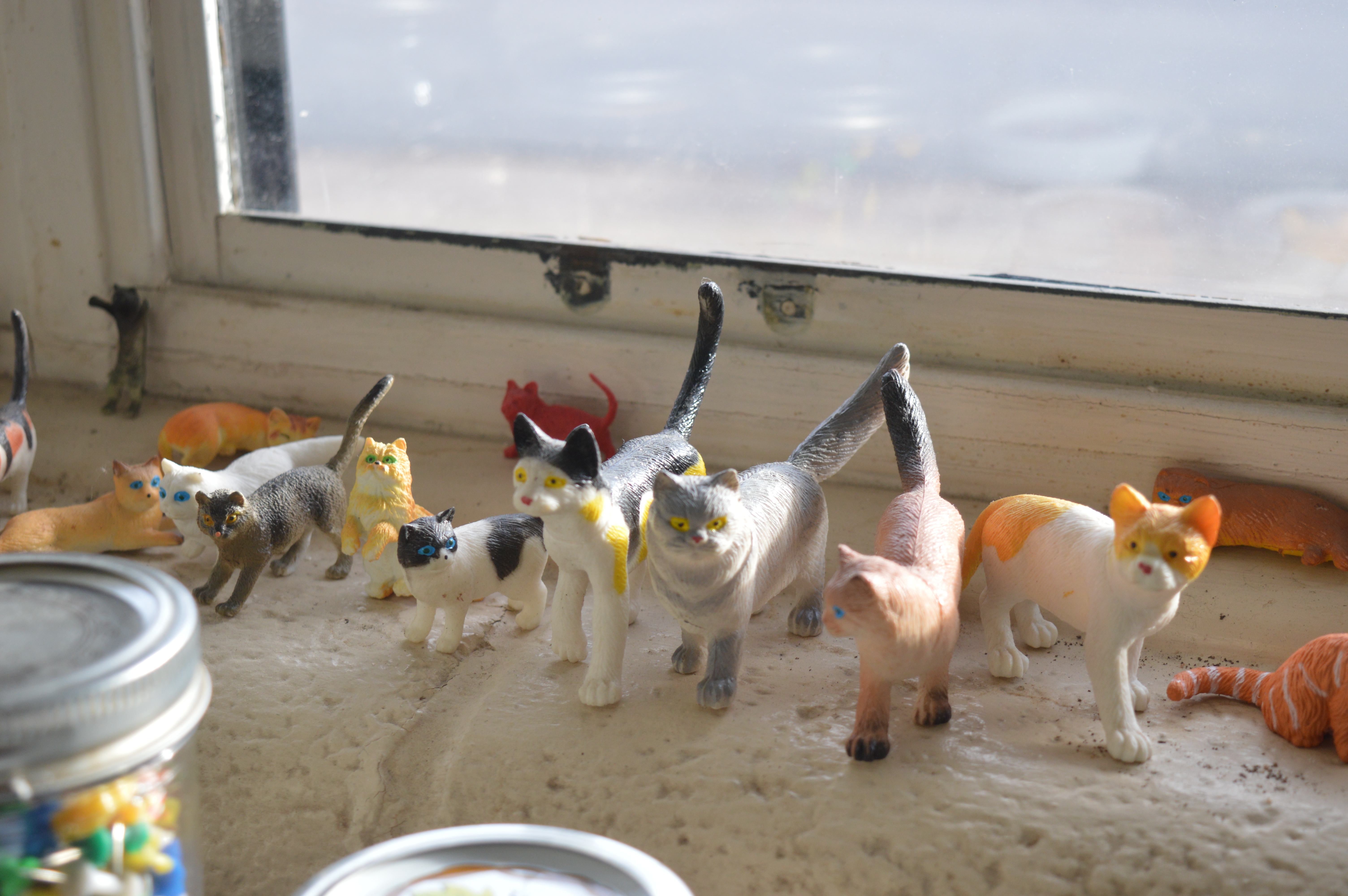Digital America interviewed Mez Breeze in April of 2025 on her work _Prog[W]res[tle]s_.
:::
Digital America: _Prog[W]res[tle]s_ is an interactive digital work that explores the cyclical onslaught of doomscrolling, democracy erosion, and gender-based objectification. This piece underscores how these urgent social issues are intertwined and perpetually presented to us online. Can you talk about your vision behind creating these archetypes that represent critical issues in our world today
Mez Breeze: The archetypes inherent in _Prog[W]res[tle]s_ are designed to feel uncomfortably familiar. By putting them into a dual-scroll format, I wanted users to encounter [and interact with] these problems as they unfold side-by-side: overlapping and colliding. The vision is to recognize how such issues [like the compulsive draw of doomscrolling, the quietly (and currently not-so-quietly) real-time fraying of democracy through far-right extremism/disinformation/misinformation/online radicalisation, the insidious normalising of climate collapse, and gender/identity-based objectification] are fuelling our late-stage capitalism-propelled challenges. The act of physical scrolling becomes almost an excavation, an uncovering: one where you’re not just watching archetypes unfold, but you’re unfolding with them. That nuance [where the personal and the political merge] is massively important.
DigA: You are credited with creating the code poetry language Mezangelle and being the first person to use it on the internet. Mezangelle treats code and text as a malleable poetic material, incorporating aspects of programming language syntax to create new and unexpected meanings. How can a reader/viewer who is experiencing Mezangelle for the first time relate to the piece?
MB: I sometimes describe Mezangelle as an interface rather than a language: a liminal zone between human and machine logics. For those first encountering it – let it wash over you. Mezangelle isn’t meant to be read like a manual: instead, it’s meant to be metabolised. It speaks in glitches, syntax slips, semantic ruptures, visual “sp[l]urts”. For first-time readers, just pause. Linger. Re-read. Let the layers build. Think of it as a language that performs rather than explains – a code that executes in multiple areas of your brain, not [just] your browser. In short, it’s less about understanding every phrase or line, and more about recognising the emotional frequencies it e[in]vokes.
Another [valid] way of handling Mezangelle is the way you’d approach a dream fragment or a half-remembered email thread [equal parts familiar and jarring]. That tension is the point. If you’re new to this poetic-code terrain, know that there are many [ie multiple] correct readings: you’re being invited to wander, to misread productively. That moment when you stumble on a phrase that resonates despite [or because of] its ambiguity? That’s the ignition point.
DigA: This piece focuses on subjects that are considered controversial in politics today. One of the interactive pieces is called Baseless, which depicts the online spread of disinformation and real world costs. Recently in the USA, the White House has come out with a statement claiming that it would decide which news outlets have access to President Donald Trump. With this in mind, where do you think America is headed regarding disinformation?
MB: The present trajectory of disinformation in the USA is deeply concerning, with fact and fiction [especially from the top tiers of government] spinning tighter together until they’ve become indistinguishable [if information is oxygen, we’re all experiencing slow suffocation at the moment]. Baseless was created to reflect this, and how the disenfranchised and marginalised are perfect targets for such disinformation. Such targets [when radicalised] then become disinformation vectors that spread more distorted truths and misinformation. The recent White House move to restrict press access signals a troubling fascistic trend that’s terrifyingly worrying: to safeguard democratic values, it’s crucial to champion open discourse and resist blatant efforts to undermine journalistic freedom [as well as create art that openly acknowledges the fact this is happening right now].
DigA: Many of your past works, like A Place Called Ormalcy, are AI-generated concepts and virtual reality-related. As an artist who has been creating art since the 90s, how have you seen digital art and AI progress?
MB: It’s true I’ve been hugely intrigued by all things AI for over three decades now, with works like The MALFI Trials (1996) and Por]TrAIts: AI Characters + Their Microstories (2022) showing the breadth of that interest. Oddly enough, my 2018 Virtual Reality work A Place Called Ormalcy isn’t associated with AI at all [and doesn’t include AI generated concepts or output] – it’s a work that’s based squarely in the realm of social commentary, with it once being described by Simon Groth [a writer from The Writing Platform]: “Right from the beginning, something is off in A Place Called Ormalcy. It’s nonsense language, garish colours, and warped illustrations might come across as camp if not for the clear sinister undertone that becomes more overt as the story progresses. Each chapter is presented in its own VR environment and the technology adds to the unsettling nature of the piece. These three-dimensional spaces, suspended in a void and frozen in time, enable the reader to zoom, rotate, and deconstruct. You’re left with the feeling you can access parts of a picture book that should be hidden from view. Told in a storybook style over seven short chapters, A Place Called Ormalcy [uses] a child-like sensibility to evoke a chilling tale of authoritarianism and conformity”.
As for how digital art and literature has progressed since the 1990’s, back then online digital spaces were niche clubs: you needed specialised hardware, expert knowledge, and a lot of patience. Now, a teenager with a browser can prototype a VR scene or fine‐tune a diffusion model in an afternoon. That accessibility is thrilling due to it flattening gatekeeping and accelerating experimentation. But it also means we’re contending with algorithmic monocultures [tools that nudge aesthetics toward a certain homogeneity]. My own trajectory – from interactive hypertexts to XR and AI – has been about wrestling with those [and all types of] defaults, and trying to bend them back toward idiosyncrasy.

DigA: You use AI-generated images in your artwork. What tools did you utilize to create the images in your work, like Soft Meat? Could you also speak to what prompts you utilized for the art piece and your process on collaborating with AI?
MB: For Soft Meat, the images started as rough composites generated through multiple runs in Midjourney and Stable Diffusion. At that stage of Midjourney’s development, that particular version had just incorporated text generation, but it was clumsy as heck and I ended up having to redo most of it using Photoshop [which I also used to edit, repaint, in-paint, texture and reshape each image in the Soft Meat scroll sequence until they became complete visual works in their own right]. Prompts ranged from the poetic to the literal: the prompts I use are rarely single-sentence affairs – they’re sprawling and iterative and overall messy, with randomness producing some of the best results [remember, kids, to crank –w and –chaos right up!].

DigA: Can you talk about what you are working on currently?
MB: Right now I’m neck-deep in a complexly layered project structured around a 16-day Research Road-trip[ping] spanning three Australian States and one Territory [crossing state lines seven times in total]. Each day’s vignette anchors itself to a different rural town, presented through encounters with local residents [with compressed storytelling fragments that (hopefully) capture the contradictions of living through profound ecological catastrophes]. The work’s [subtle but insistent] protagonist is the climate itself: glimpsed through understated layers that reflect an environmental collapse so advanced it feels uncanny and almost surreal. At this stage of narrative development, imagine these 16 interconnected stories presented as an interactive, digitally accessible grid – likely structured as a 4×4 matrix, where stories interrelate dynamically across ecological, human, and climate- centred links. I’m hoping to have this current work manifest as a quiet yet urgent reflection on ecological grief, historical erasure, cultural resilience, and the fragile potential for correction. I’m yet to coin a final title but at this stage the work will begin with this: “The following is approximately 8% faulty, 15% fabricated, and 77% true.”
:::
Check out Mez Breeze’s work _Prog[W]res[tle]s_.
:::




